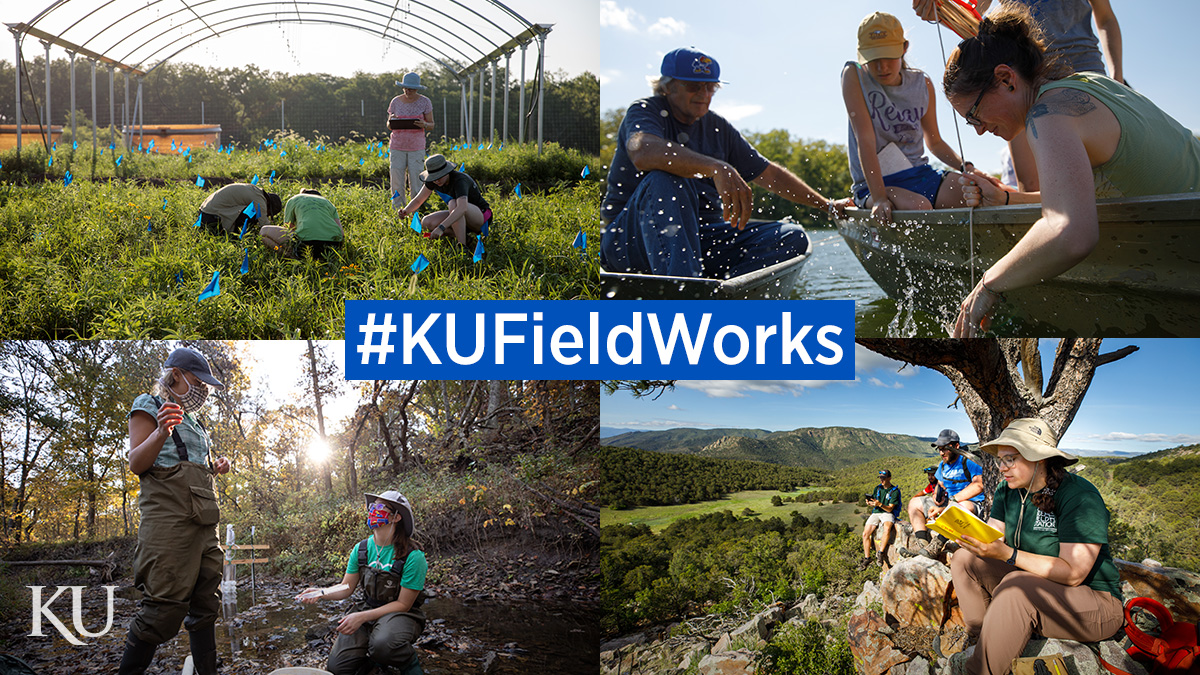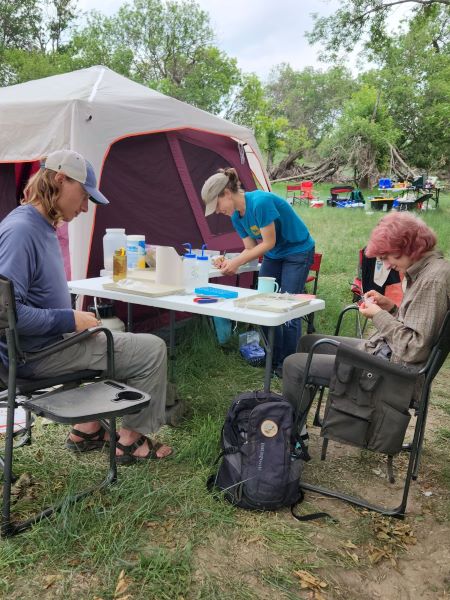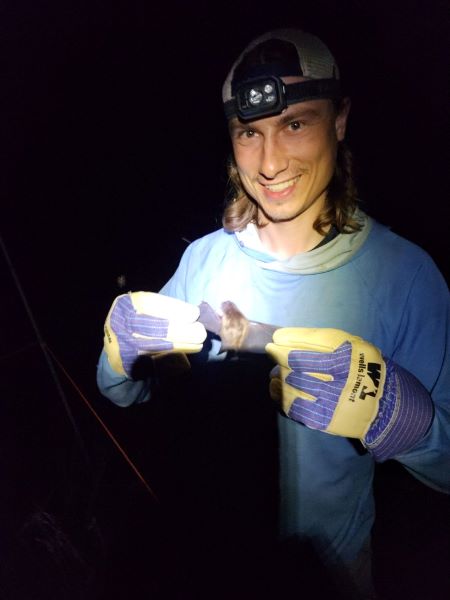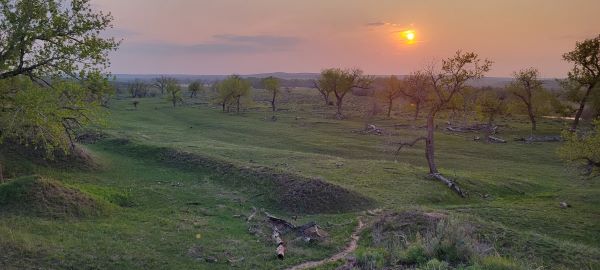#KUFieldWorks: Tracking changes in Kansas ecological history

Editor’s note: Fieldwork provides invaluable insights about real-world environments and processes, expanding and reinforcing what researchers learn in classrooms, labs and collections. KU faculty, staff and students across a spectrum of disciplines are taking their inquiry directly to rivers, prairies, dig sites, glaciers, islands, burial grounds and more this summer. Through the #KUFieldWorks series, we'll join them on their adventures.
Q&A with Dianna Krejsa, Mammals Collection Manager
LAWRENCE — More than 100 years ago, a field crew from KU's Biodiversity Institute & Natural History Museum journeyed through a unique mix of Kansas counties to document the mammals, birds, amphibians and wildlife flourishing in those environments. Now Dianna Krejsa and her team are retracing their steps to evaluate changes in multiple Kansas ecosystems.
What methods, approaches, experiments, etc. are you using?
In our current in-state field activities, we are conducting work supported by state grant funds to survey Kansas species. Our fieldwork is structured by resurveying sites that Charles Bunker, a curator of the KU Natural History Museum in the early 1900s, visited in 1911 and 1912. These unique locales and habitats included the Gypsum Hills of southern Kansas (Clark, Comanche and Barber counties), the desert and shortgrass prairie of west-central Kansas (Trego and Stafford counties), the high plains of far western Kansas (Cheyenne, Wallace and Hamilton counties), and mixed oak-hickory woodlands of eastern Kansas (Doniphan, Woodson, Greenwood and Cherokee counties.
Our resurvey — more than 100 years later — is producing important new county records and helps inform wildlife managers of the conservation status of certain species, provides data on population cycles and fluctuations, and serves as a new baseline for future examinations of change through time. Our methods for surveying and collecting are not dissimilar to Bunker’s, so our group is able to replicate the work and effort he and his field crew put in to getting the records they did, and we can compare them to species diversity and abundances found today. These surveys include mammals, birds and herpetofauna (amphibians and reptiles), and each resurvey at a given county site generates a short report of species found there that can be used by wildlife managers as well as private landowners in the area.

Why does your study matter to your field or for society?
We are providing new data on Kansas native species that will be used to look backward — to examine changes in the last 100 years — as well as to serve as a baseline for changes in the next 50 to 100 years. What can new hybridization dynamics among birds tell us about encroachment of eastern species on western ones? Are some species getting sequestered to “islands” of ideal habitat, where they are no longer able to disperse and add to their species-wide gene pool? Or are previously rare or imperiled species stabilizing or growing? We’re helping to add to those datasets and work with state agencies and landowners who are invested in our natural resources.
What do you enjoy most about being in the field?
I enjoy being in the field because, of course, it involves getting back into nature — and that is why many of us entered a field like biology, natural resources management or conservation: a love for the outdoors and wonders of the natural world. I also love the near-constant business of fieldwork — that there is always something to work on next. And with the camaraderie of good colleagues and new students getting to experience fieldwork for the first time, there is nearly limitless energy among us.
What are some memorable (funny, scary, surprising, etc.) moments from the field?
Each day walking a trapline or driving to survey is going to be full of surprises — you don’t know what you’ll see on the landscape. One evening survey, we stopped the vehicle to get a better look at a jackrabbit, angling the headlights for a better view. In doing so, we happened to catch sight of a striped skunk walking into the brush. Then, when we got out binoculars to have a closer look, the rabbit and skunk were gone but new eye shine on the hillside proved to be a badger. Who can ask for a better evening drive?
When is fieldwork frustrating, challenging or overwhelming?
The only thing that can stop a good field experience in its tracks is lack of food or coffee. Make sure the crew is well-fed and caffeinated as needed, and the rest will fall into place. Regardless of frustrating moments or challenges, nearly everyone looks back on their time in the field fondly (perhaps after they’ve had a shower and nap after returning home).
How does fieldwork complement the work you do elsewhere?
Fieldwork is how we build collections at the Biodiversity Institute, and those collections are at the root of our research efforts and student involvement. To remain relevant, a natural history collection must be dynamic and adaptive in its methodologies (being perceptive to current and proactive toward future research needs) and be ever-growing.
First photo: University of Kansas researchers conduct fieldwork in prairies, rivers, streams and mountains. The #KUFieldWorks series follows researchers on their fieldwork adventures.
Second photo: Ben Wiens, Dianna Krejsa and Bailey Dixon prepare specimens in the field in Trego County.
Third photo: Ben Wiens holds an evening bat documented in the resurvey after it was caught in a mist net in Trego County.
Fourth photo: Photo of a tree-dotted field in Cheyenne County.